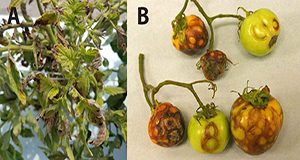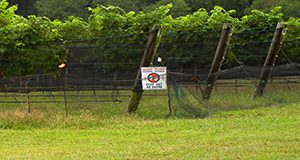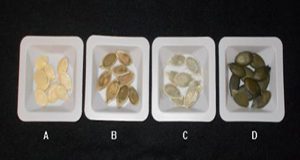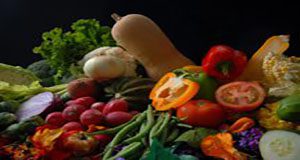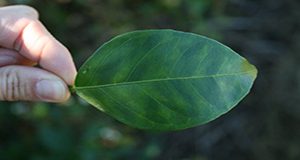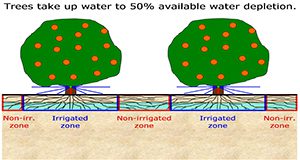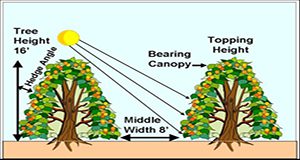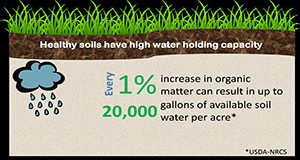Tospoviruses are plant-infecting viruses, with three tosposvirus species being particularly relevant to Florida tomato production: Tomato spotted wilt virus, Tomato chlorotic spot virus, and Groundnut ringspot virus. This 5-page document describes the performance of several tospovirus-resistant tomato hybrids based on grower trials in the Homestead, FL production area. Written by Rebecca L. Wente, Samuel F. Hutton, Scott Adkins, William Turechek, and Joseph Funderburk and published by the UF/IFAS Horticultural Sciences Department, December 2017.
http://edis.ifas.ufl.edu/hs1311
Author: Sarah Chrisien
Cuba and US: Food Customs and Health
Cubans currently make up the third largest Hispanic population in the US, with many living in Florida (mostly in Miami). Therefore, their cultural influence is notable, especially when it comes to cuisine. This 3-page document discusses traditional meals, diet, and health among Cubans. Written by Agata Kowalewska and Edwin Makarevich and published by the UF/IFAS Food Science and Human Nutrition Department, December 2017.
http://edis.ifas.ufl.edu/fs303
Caladium Cultivars 'Cosmic Delight', 'Fiesta', and 'Hearts Desire'
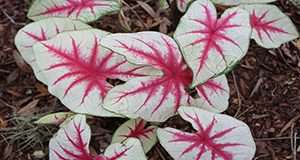 Caladiums are commonly grown in containers, hanging baskets, or planted directly in the landscape as accent and border plants. New caladium cultivar introductions are important to the Florida caladium industry, the greenhouse/nursery industries, and commercial landscape maintenance companies. The UF/IFAS Gulf Coast Research and Education Center released three new caladium cultivars, ‘Cosmic Delight’, ‘Fiesta’, and ‘Hearts Desire’, in 2015. This 7-page document describes the characteristics, production potential, and performance of these cultivars. Written by Zhanao Deng and published by the UF/IFAS Environmental Horticulture Department, December 2017.
Caladiums are commonly grown in containers, hanging baskets, or planted directly in the landscape as accent and border plants. New caladium cultivar introductions are important to the Florida caladium industry, the greenhouse/nursery industries, and commercial landscape maintenance companies. The UF/IFAS Gulf Coast Research and Education Center released three new caladium cultivars, ‘Cosmic Delight’, ‘Fiesta’, and ‘Hearts Desire’, in 2015. This 7-page document describes the characteristics, production potential, and performance of these cultivars. Written by Zhanao Deng and published by the UF/IFAS Environmental Horticulture Department, December 2017.
http://edis.ifas.ufl.edu/ep545
Worker Protection Standard: Additional Requirements for Agricultural Employers of Workers
The Worker Protection Standard (WPS) Act for Agricultural Pesticides was established by the US Environmental Protection Agency in 1992 and has undergone several revisions since. Recent revised provisions became effective in January 2017. This document will address the additional requirements for agricultural employers of workers under the revised WPS. Written by Frederick M. Fishel and published by the UF/IFAS Agronomy Department, December 2017.
http://edis.ifas.ufl.edu/pi273
Peach Consumption: A Profile of Purchasers and Non-Purchasers
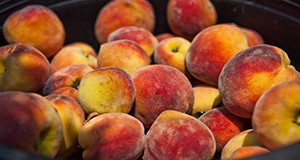
Peaches are among the most commonly produced fruits in the United States; understanding consumer awareness, perceptions, and preferences regarding Florida peaches is important to the future of the industry. This 5-page document addresses consumers’ perceptions of Florida peaches, purchasing motivations and barriers, preferred packaging options and opportunities, purchasing locations, and knowledge of peach health benefits. Written by Joy Rumble, Kara Harders, and Kathryn Stofer and published by the UF/IFAS Department of Agricultural Education and Communication, December 2017.
http://edis.ifas.ufl.edu/wc288
Health Benefits of Pumpkin Seed and Nutrition Profile of 35 Pumpkin Accessions
Pumpkin seed is high in oil, protein, and total unsaturated fatty acids and is a popular ingredient in snacks and other foods sold across the country. This 5-page article will discuss the health benefits, production, processing, and nutritional profile of pumpkin seed. Written by Geoffrey Meru, Yuqing Fu, Dayana Leyva, Paul Sarnoski, and Yavuz Yagiz and published by the UF/IFAS Horticultural Sciences Department, November 2017.
http://edis.ifas.ufl.edu/hs1312
Micronutrients Considerations for Warm-Season Forage Grass Systems in Florida
 Warm-season grasses are vital to livestock production systems and dominate ground cover in tropical and subtropical areas. The objective of this 7-page publication is to provide basic information about the role of micronutrients in warm-season grass production systems in Florida. Written by Jane C. Griffin, Joao Vendramini, Diane Rowland, and Maria L. Silveira and published by the UF/IFAS Agronomy Department, November 2017.
Warm-season grasses are vital to livestock production systems and dominate ground cover in tropical and subtropical areas. The objective of this 7-page publication is to provide basic information about the role of micronutrients in warm-season grass production systems in Florida. Written by Jane C. Griffin, Joao Vendramini, Diane Rowland, and Maria L. Silveira and published by the UF/IFAS Agronomy Department, November 2017.
http://edis.ifas.ufl.edu/ag419
How to Calibrate Your Fertilizer Spreader
Fertilizer application is only effective if you ensure uniform coverage. This 5-page document discusses the calibration and use of fertilizer spreaders for successful application. Written by T.W. Shaddox, J.B. Unruh, and L.E. Trenholm and published by the UF/IFAS Environmental Horticulture Department, November 2017.
http://edis.ifas.ufl.edu/lh024
Best Practices for Shoppers at the Farmers' Market
Farmers’ markets are popular, diverse places to shop for fresh, local food, nursery stock, handmade crafts, and much more. This 3-page fact sheet is one in a “Florida Farmers’ Markets” series and offers recommendations for shoppers for a successful farmers’ market experience. Written by Maria Rometo, Jamie Sapijaszko, and Soohyoun Ahn and published by the UF/IFAS Department of Food Science and Human Nutrition, November 2017.
http://edis.ifas.ufl.edu/fs302
Food Allergies
A food allergy is a specific immune system reaction that happens after a person consumes what is normally considered a safe food. Reactions can range in severity from minor to fatal. This 4-page document discusses the cause, symptoms, and management of food allergies in children and adults. Written by Keith R. Schneider, Renee Goodrich-Schneider, Soohyoun Ahn, Susie Richardson, Ploy Kurdmongkoltham, and Bruna Bertoldi and published by the UF/IFAS Department of Food Science and Human Nutrition, November 2017.
http://edis.ifas.ufl.edu/fs123
Food Safety Tips for the Holiday Season
Food is always an important part of holiday festivities, but holiday meals can take a turn for the worse if food safety is not properly practiced when preparing and cooking the food. This 7-page factsheet provides information about safe food practices for the holidays. Written by Soohyoun Ahn, Jessica A. Lepper, and Keith R. Schneider and published by the UF/IFAS Department of Food Science and Human Nutrition, November 2017.
http://edis.ifas.ufl.edu/fs260
Communicating with Extension Clients about Water
Water impacts Florida’s tourism, agriculture, retail, and real estate development industries, all of which significantly contribute to Florida’s economy. Enhancing and protecting water quantity, quality, and supply is of ever-increasing importance to UF/IFAS Extension. This four-page document will provide an overview of how to communicate with Florida residents about water, including information about their preferred communication method and what water-related topics are of interest to Florida residents. Written by Alexa J. Lamm, Phillip Thomas Stokes, and Caroline G. Roper, and published by UF’s Agricultural Education and Communication Department, September 2017.
http://edis.ifas.ufl.edu/wc165
Florida Peaches: A Perfect Snack
The growing conditions in Florida have given Florida-grown peaches unique characteristics that make them an ideal springtime snack. This 3-page document discusses the characteristics, health benefits, purchase, and storage of Florida peaches. Written by Joy Rumble, Kara Harders, and Kathryn Stofer and published by the UF/IFAS Department of Agricultural Education and Communication, November 2017.
http://edis.ifas.ufl.edu/wc287
'Florida Beauty' Strawberry
‘Florida Beauty’ is a new strawberry cultivar released by the University of Florida and commercialized in 2017. This 4-page document describes the characteristics, performance, growth, and management of this cultivar. Written by Vance M. Whitaker, Natalia A. Peres, and Shinsuke Agehara and published by the UF/IFAS Horticultural Sciences Department, November 2017.
http://edis.ifas.ufl.edu/hs1307
Citrus Tree Care for the Home Gardener in the HLB Era
Since the early 2000s, growing citrus has become much more challenging due to plant disease pressure. HLB is the most devastating disease affecting Florida citrus, and threatens the survival of the citrus industry. This 4-page document describes citrus growth and care while managing the risk of an HLB infection. Written by Jamie D. Burrow, Tripti Vashisth, Megan Dewdney, and Brooke Moffis and published by the UF/IFAS Plant Pathology Department, November 2017.
http://edis.ifas.ufl.edu/pp336
Bloomify Red and Bloomify Rose, Two Infertile Lantana camara Cultivars for Production and Use in Florida
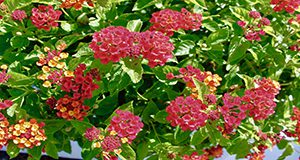 Lantana camara is a popular nursery and landscape plant in the United States; however, it is listed as a Category 1 invasive species to Florida due to its ability to hybridize with Florida’s native plant species Lantana depressa. In 2004, the UF/IFAS Gulf Coast Research and Education Center initiated a research program to develop two highly infertile L. camara cultivars, ‘Bloomify Red’ and ‘Bloomify Rose’. This five-page document discusses the production and characteristics of these cultivars. Written by Zhanao Deng and Sandra B. Wilson and published by the UF/IFAS Environmental Horticulture Department, October 2017. http://edis.ifas.ufl.edu/ep544
Lantana camara is a popular nursery and landscape plant in the United States; however, it is listed as a Category 1 invasive species to Florida due to its ability to hybridize with Florida’s native plant species Lantana depressa. In 2004, the UF/IFAS Gulf Coast Research and Education Center initiated a research program to develop two highly infertile L. camara cultivars, ‘Bloomify Red’ and ‘Bloomify Rose’. This five-page document discusses the production and characteristics of these cultivars. Written by Zhanao Deng and Sandra B. Wilson and published by the UF/IFAS Environmental Horticulture Department, October 2017. http://edis.ifas.ufl.edu/ep544
Irrigation Management of HLB-Affected Trees
Water is a limiting factor in Florida citrus production due to non-uniform rainfall distribution and the low water-holding capacity of our sandy soils. Because periods of low rainfall coincide with critical stages of citrus production, additional irrigation is necessary to reduce the negative effects of water stress. This 6-page document covers recent findings on water use of trees affected by citrus greening and the impact this would have on irrigation management considerations. Written by Davie Kadyampakeni, Kelly Morgan, Mongi Zekri, Rhuanito Ferrarezi, Arnold Schumann, and Thomas A. Obreza and published by the UF/IFAS Department of Soil and Water Sciences, October 2017.
http://edis.ifas.ufl.edu/ss659
Canopy Management of Citrus Trees
Tree canopy and bearing volume are two important factors in fruit production and fruit quality; generally, trees with larger canopy volumes produce more fruit than smaller-canopy trees. Therefore, canopy management is an important aspect of citrus production in Florida to avoid problems associated with overcrowding and excessively tall trees. This three-page document describes canopy management practices for citrus growers. Written by Tripti Vashisth, Mongi Zekri, and Fernando Alferez and published by the UF/IFAS Horticultural Sciences Department, October 2017.
http://edis.ifas.ufl.edu/hs1303
Citrus Propagation
Plant propagation is the art and science of reproducing plants while preserving their unique characteristics from one generation to the next. This 6-page document, written by Ute Albrecht, Mongi Zekri, and Jeffrey Williamson, describes the propagation process for commercial citrus. Published by the UF/IFAS Horticultural Sciences Department, October 2017.
http://edis.ifas.ufl.edu/hs1309
Raising Soil Organic Matter Content to Improve Water Holding Capacity
Just like a sponge, soils with high organic matter (OM) can absorb and hold water during rainfall events and deliver it to plants during dry spells. Water is increasingly becoming the most limited natural resource supporting agriculture, but growers can improve their water storage capacity by raising their soil’s OM content. This 5-page fact sheet demonstrates how soil OM content can help increase water holding capacity of soils and describes the laboratory procedure to measure WHC. Written by Jehangir H. Bhadha, Jay M. Capasso, Raju Khatiwada, Stewart Swanson, and Christopher LaBorde, and published by the UF/IFAS Department of Soil and Water Sciences, October 2017.
http://edis.ifas.ufl.edu/SS661
